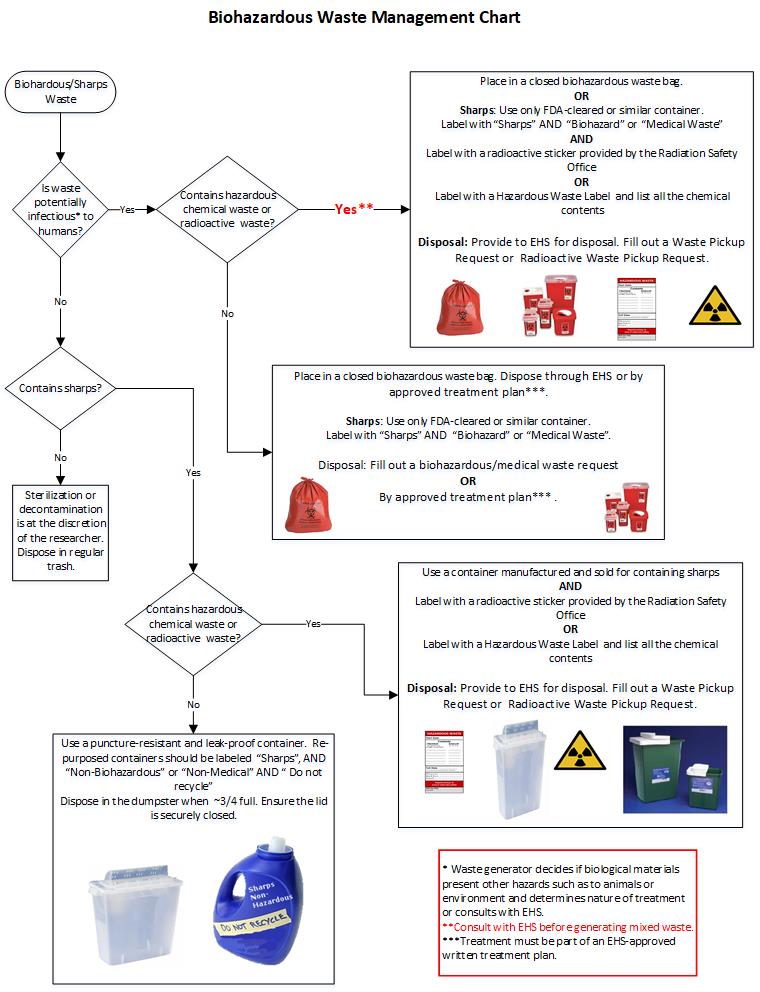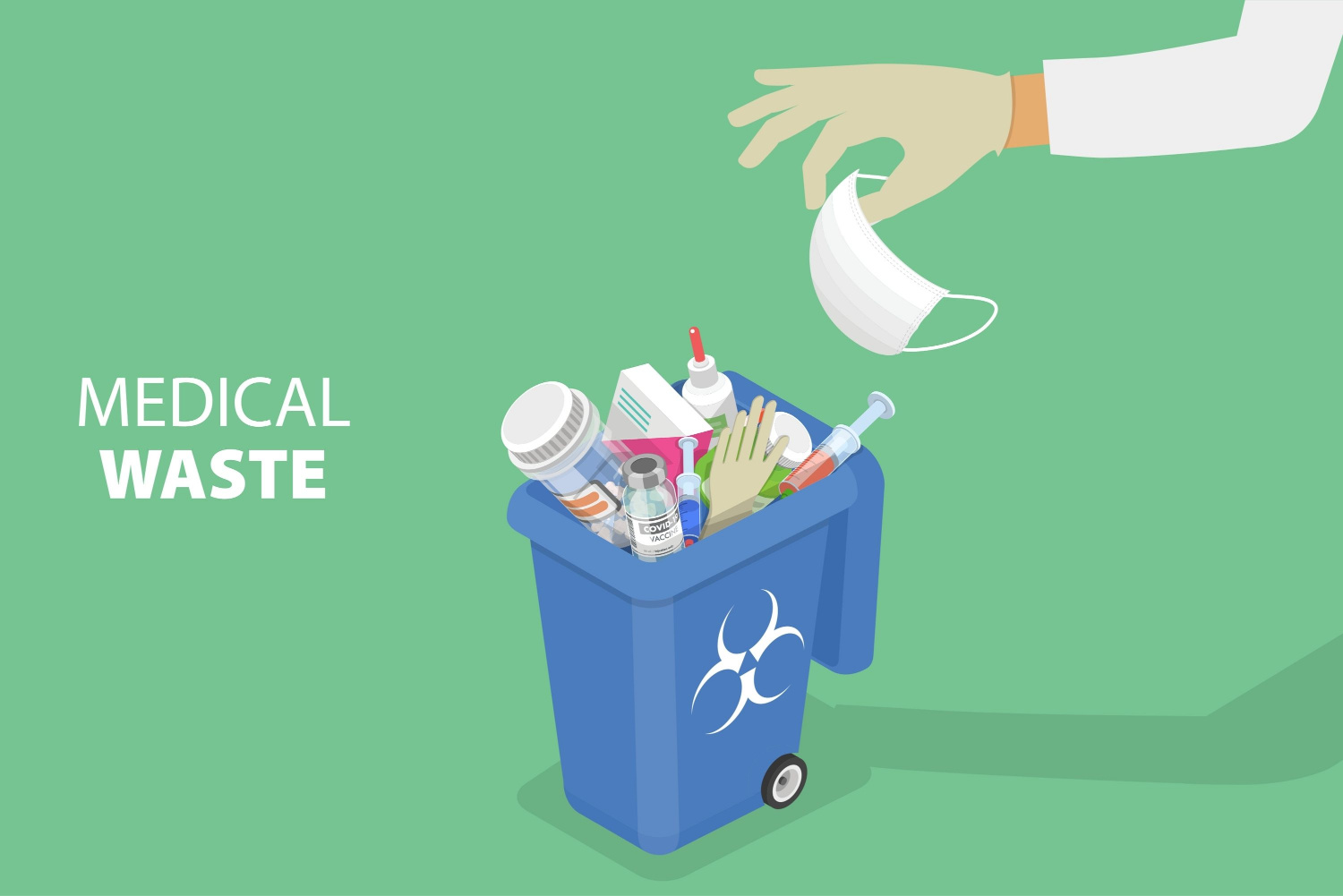Ideal Practices for Medical Waste Management
Medical waste monitoring is a critical aspect of medical care facilities' operations to make sure the safety of clients, team, and the setting. Executing finest methods in clinical waste administration is important to reduce the risks associated with contaminated materials. This consists of appropriate partition and classification of waste, ensuring its risk-free storage space and labeling, sticking to regulatory guidelines, and making use of effective disposal techniques. By following these finest techniques, healthcare facilities can minimize the potential for infections, injuries, and contamination brought on by improper handling and disposal of medical waste. This intro aims to offer a review of the importance of ideal practices for clinical waste monitoring and the subsequent areas will explore each method carefully - medical waste disposal service.

Partition and Categorization
In the field of medical waste monitoring, correct partition and classification are important practices for ensuring the reliable and safe disposal of healthcare-related materials. Medical waste is produced from various sources, including hospitals, facilities, labs, and other healthcare facilities. It is composed of a large array of products, such as needles, syringes, plasters, gloves, and pharmaceutical waste.
Partition entails the systematic separation of different kinds of medical waste based on their features and prospective threats. This procedure assists to stop cross-contamination and makes sure that each kind of waste is dealt with properly. Sharps waste, such as blades and needles, should be positioned in puncture-resistant containers to protect against injuries and the spread of transmittable conditions. Likewise, infectious waste, such as blood-soaked bandages or cultures, ought to be segregated and dealt with individually to decrease the threat of spreading microorganisms.
Categorization is the process of categorizing clinical waste into different groups based upon its possible risks. These classifications might include infectious waste, contaminated materials, pharmaceutical waste, and basic waste. By categorizing waste, health care centers can determine the appropriate disposal approaches and make certain conformity with neighborhood policies and guidelines.
Correct partition and categorization of medical waste not just secure the health and wellness and security of medical care employees and the basic public yet additionally contribute to the overall efficiency and efficiency of waste management. It decreases the danger of mishaps, lessens ecological impacts, and promotes accountable garbage disposal techniques.
Correct Storage and Identifying
To guarantee the secure and efficient disposal of medical waste, health care centers have to stick to proper storage and labeling techniques. WasteX Medical Waste Disposal. Proper storage and labeling play a critical duty in preserving the honesty of clinical waste administration systems and protecting the health and wellness and security of medical care employees, clients, and the general public
When it pertains to storage, it is important to have marked areas particularly designed for different kinds of clinical waste. These locations need to be safe, well-ventilated, and outfitted with ideal containers that satisfy governing criteria (medical waste disposal service). Partition and classification of waste ought to likewise be considered to prevent cross-contamination and possible hazards

Normal surveillance and inspection of storage locations and containers are important to recognize any issues or violations. Personnel should be educated on proper storage and labeling techniques, highlighting the value of conformity with methods and regulations.
Safe Transportation and Handling
Making certain the correct and safe and secure transport and handling of medical waste is important for preserving the stability of waste administration systems and safeguarding the wellness and security of all included. Medical waste, which consists of things contaminated with contagious products, pharmaceuticals, and other unsafe compounds, have to be moved in a way that stops leaks, spills, and possible contamination.
It is essential to make use of leak-proof and puncture-resistant containers that are especially developed for medical waste. Additionally, waste must be set apart based on its nature and kind to avoid cross-contamination.
Throughout transportation, it is important to guarantee that waste containers are firmly fastened and saved in a stable fashion. Cars used for transporting clinical waste ought to be furnished with appropriate security functions, such as spill control systems, to decrease the risk of any spills or leaks. Vehicle drivers must obtain training on appropriate handling and emergency response treatments to successfully address any kind of unforeseen events.
Moreover, the transport and handling of medical waste must comply with all relevant regulations and guidelines stated by local, state, and government authorities. WasteX Medical Waste Disposal. medical waste removal service. Routine evaluations and audits should be performed to assess conformity and recognize any type of locations for renovation
Compliance With Regulatory Standards
Preserving compliance with regulatory standards is vital for efficient medical waste monitoring. These standards are put in place to shield public wellness and the setting by making certain that clinical waste is effectively dealt with, dealt with, and disposed of. Compliance with regulatory guidelines aids to protect against the spread of transmittable diseases, decrease prospective risks, and lower the general impact of clinical waste on the atmosphere.
To achieve compliance, health care facilities must remain informed concerning the details policies controling clinical waste management in their jurisdiction. These guidelines may differ from country to country, and even within different states or regions. It is essential for healthcare centers to have a detailed understanding of these standards and to implement suitable strategies and procedures to ensure compliance.
One secret facet of conformity is the correct segregation and labeling of different sorts of medical waste. This includes dividing sharps from other waste, as well as classifying waste based upon its you could try this out potential threats. Healthcare centers must likewise make certain that medical waste is saved in ideal containers which these containers are correctly labeled and sealed.
In addition, compliance with governing standards calls for health care facilities to develop correct training and education programs for team member associated with medical waste administration. This consists of giving training on waste partition, managing, and disposal treatments, along with the appropriate use individual protective tools.
Routine surveillance and audits are likewise important to make sure recurring compliance with regulatory standards. This involves conducting regular assessments of waste storage areas, recording waste monitoring treatments, and preserving documents of waste disposal.
Efficient Disposal Approaches
Healthcare centers must employ effective disposal techniques for appropriate management of medical waste. Incorrect disposal of clinical waste can present major health and wellness and ecological risks. There are a number of methods that can be utilized to successfully throw away medical waste, ensuring the security of healthcare workers, individuals, and the general public.
One generally used approach is incineration. Incinerators can securely burn clinical waste at high temperatures, lowering the volume and ruining any type of potentially dangerous pathogens. Incineration can be pricey and might launch hazardous contaminants into the air if not effectively controlled.
Another method is autoclaving, which includes subjecting the waste to high-pressure heavy steam. This procedure eliminates microorganisms, viruses, and other microorganisms, rendering the waste safe for disposal in normal waste streams. Autoclaving is a reliable and eco-friendly approach, yet it needs specialized equipment and skilled personnel.
Chemical sanitation is likewise made use of in some instances, where liquid chemicals are related to the waste to decontaminate it. This method is much less typically made use of due to problems about the effectiveness of chemical sanitation and the capacity for chemical deposits to infect the setting.
Along with these techniques, healthcare facilities ought to also execute proper partition, packaging, and labeling of clinical waste to ensure its safe handling and disposal. Normal training and education of team on appropriate waste monitoring methods are essential to keeping effective disposal approaches.
Conclusion
In verdict, executing finest practices for medical waste administration is necessary for making certain the security of healthcare workers, clients, and the environment. By properly segregating and categorizing waste, keeping and identifying it properly, guaranteeing risk-free transport and handling, adhering to regulative guidelines, and employing reliable disposal methods, healthcare centers can effectively handle and minimize the dangers connected with medical waste. It is essential for health care companies to focus on and adhere to these finest practices to keep a risk-free and lasting medical care setting.
Medical waste management is a vital facet of healthcare facilities' procedures to make sure the safety and security of patients, team, and the environment. Carrying out ideal practices in clinical waste management is vital to minimize the risks associated with dangerous waste. These groups may include transmittable waste, harmful waste, pharmaceutical waste, and general waste.In final thought, executing ideal techniques for medical waste management is necessary for guaranteeing the security of health care workers, individuals, and the setting. By correctly classifying and setting apart waste, keeping and labeling it correctly, ensuring risk-free transportation and handling, abiding with regulatory standards, and employing reliable disposal approaches, health care facilities can efficiently manage and minimize the threats associated with medical waste.